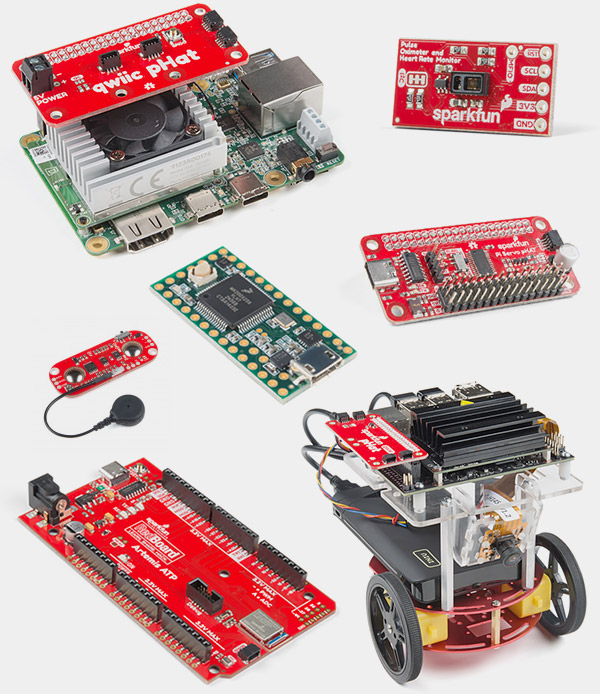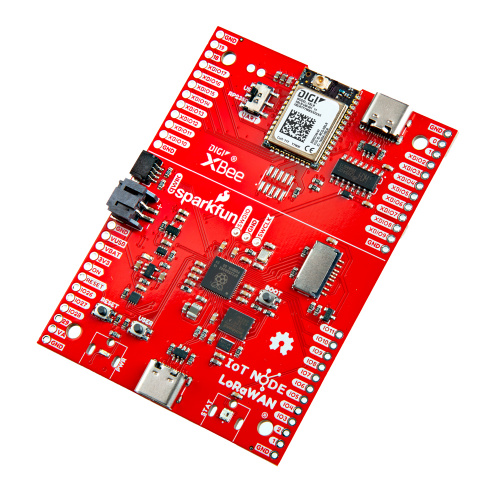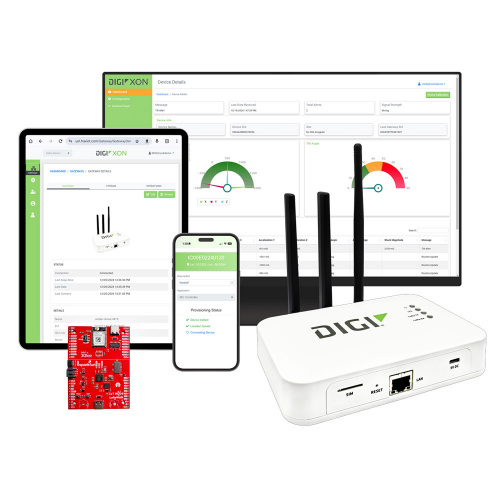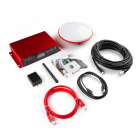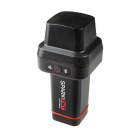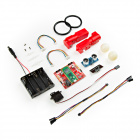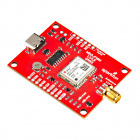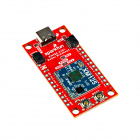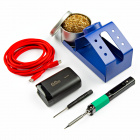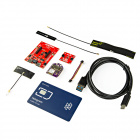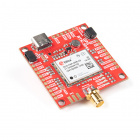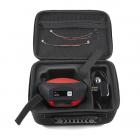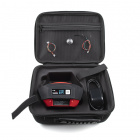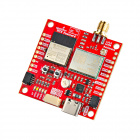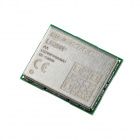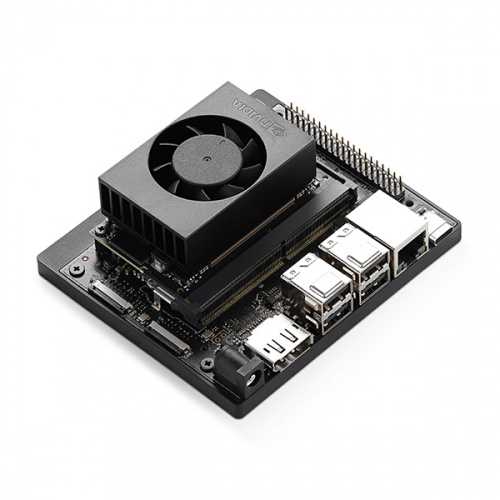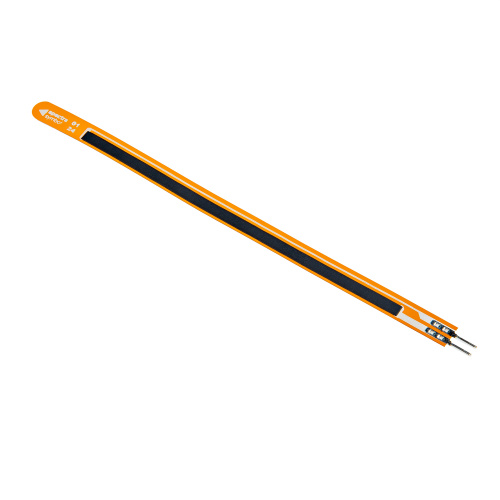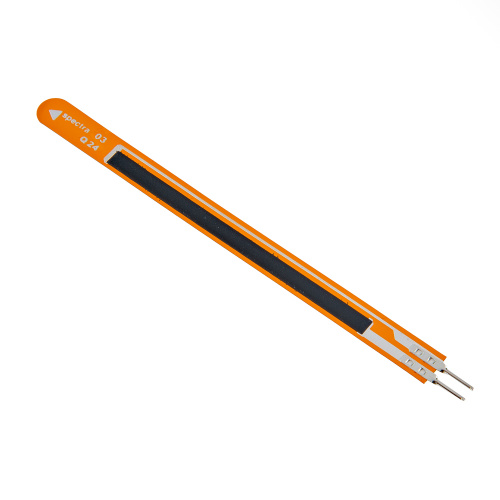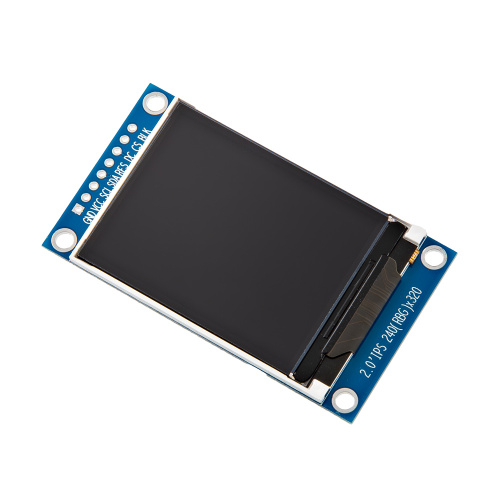Hello, everyone and welcome to the first full week of 2025! Today, we are proud to announce another new collaboration with Digi International® to release a new board and two new kits, each capable of working for LoRaWAN®. Aimed at accelerating end-node creation and deployment via a number of streamlined hardware and software features, these products are designed to simplify LoRaWAN® setup for developers and professionals, and are perfect for applications that require reliable communication in challenging environments. without further ado, let's take a closer look at each of today's new products!
The SparkFun IoT Node for LoRaWAN® development board brings an entirely new level of usability to the often convoluted and configuration-intensive effort to set up a LoRaWAN®-based IoT Device. Combining the ease of LoRaWAN® setup and configuration delivered by the Digi X-ON™ system with the rapid prototyping provided by the SparkFun Qwiic ecosystem, the SparkFun IoT Node for LoRaWAN® development board accelerates IoT end-node creation and deployment.
Please keep in mind that this board features a special introductory price of $49.95 while our initial stock is still available! After our initial amount of boards have sold out, the price will increase to its normal price of $99.95.
With the integration of Digi X-ON technology, the SparkFun IoT Node for LoRaWAN® board allows the creation and deployment of a LoRaWAN® IoT sensor in minutes.
- Set up the Digi HX15 Gateway for LoRaWAN® and corresponding Digi account.
- Register the IoT Node – LoRaWAN® board quickly using the digital data block on the module.
- Add the antenna and a supported Qwiic sensor to the Node board
- Power the board
The SparkFun IoT Node for LoRaWAN® board is shipped with firmware installed that automatically connects to Digi X-ON, detects an attached sensor, and posts data to the X-ON cloud. Configured via a serial console connection, this application allows rapid evaluation and creation of a LoRaWAN® IoT device.
In addition to the pre-installed firmware, full software customization and development are supported with the IoT Node for LoRaWAN® board.
The Sparkfun Digi X-ON Kits for LoRaWAN® (North America) and (Europe) contains everything you need to get an IoT system up and running within minutes. Containing an HX15 Gateway from Digi, the innovative SparkFun IoT Node for LoRaWAN® board, and SparkFun's dual-action ENS160/BME280 (Qwiic) Environmental Combo Board, this kit takes the often convoluted and configuration-intensive effort to set up a LoRaWAN®-based IoT Device. Each of these kits make it a breeze to get set up and connected.
The kits also include a free 30-day subscription to Digi X-ON™ device management platform and free cellular connectivity!
That's it for today. As always, we can't wait to see what you make! Shoot us a tweet @sparkfun, or let us know on Instagram, Facebook or LinkedIn. Please be safe out there, be kind to one another! We'll be back with more new products later in the week so make sure to check back then. Happy hacking!
